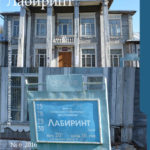Обнаженное тело и его функция в конструировании образов социальной реальности в Перестроечном кинематографе
Naked body and its function in constructing images of social reality in the cinematography of the Perestroika period
Author(s): Jakub SadowskiSubject(s): Cultural history, Metaphysics, Aesthetics, Social Philosophy, History of Communism, Film / Cinema / Cinematography
Published by: Издатель Наталья Докучаева
Keywords: naked body; nudity; Soviet films; perestroika; social reality;
Summary/Abstract: Almost to the end of the Soviet era, the language of Soviet cinema, whose development from the 1930s onwards was blocked by inertia caused by censorship and aesthetics subordinated to ideology, did not develop its own aesthetic of nudity. The list of Soviet films made before the Perestroika period featuring less or more direct images of a naked body is very limited, numbering — depending on the definition of “nakedness” — between ten and a few dozen films. The situation changed markedly in the Gorbachev era, when the increased pluralism of public discourse and the weakened influence of the censor led to rapid increase in everything that characterised the Western film aesthetic. As a result, naked bodies, and especially those parts that particularly attracted audience’s gaze, began to hit the screens en masse. This article analyses those cases of Soviet films, in which meanings, connected to the public and social sphere, are overlaid on nudity.
Journal: Лабиринт. Журнал социально-гуманитарных исследований
- Issue Year: 2016
- Issue No: 6
- Page Range: 91-99
- Page Count: 9
- Language: Russian

